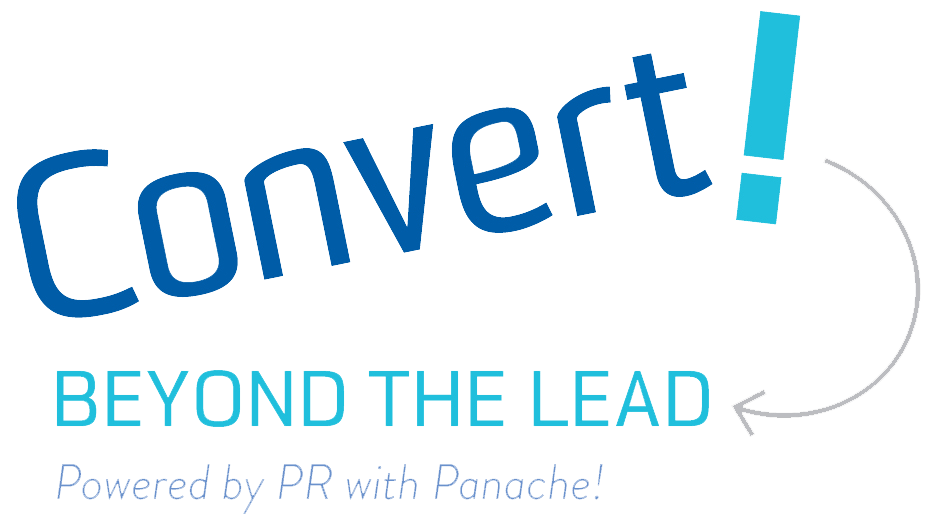By Machele Stefhon, Director, Convert! powered by PR with Panache! — Published in the EdNET Insight newsletter, Friday, May 01, 201
For many of us, participating in a marketing planning conversation often begins with the same question, “How and where should we focus our limited marketing budget?” What this question really seems to be asking is, “What’s the magic bullet that would boost our market awareness and increase sales?” The reality is there isn’t one! However, there are ways to make sure you are strategically setting the stage to build brand voice and establish a presence as a trusted partner with K-12 administrators. Let’s explore how you can transition your marketing strategies from the typical promotion (and hoping for the best) to a targeted focus on content, which will engage your audience while allowing you to position your solution.
As simple as it sounds, the most important step begins with the development of a strategy. One of the most common mistakes companies make when developing a content-rich marketing strategy is to start by defining tactics first. By tactics, I mean all of the creative energies that go into creating events, webinars, emails, and similar activities without a real end game in mind.
In order to set the stage for increasing brand voice and sales, you must have a strategy in place that incorporates your corporate mission, buyers’ pain points, and your solution. When you plan with the end in mind, you can orchestrate your tactics and repurpose them, so you are working efficiently and cohesively. Once you’ve established this strategy, you’ll know which tactics to employ for any given audience. Before we have this creative tactical soiree, let’s discuss what steps must happen in order to develop your strategy.
Changing Internal Mindset
A great content marketing plan starts by building consensus around your vision. Go for the pocketbook! Start by involving leadership, who allocate resources and budget, early in the process. This will help make the plan much more successful.
Next, identify the key challenges that need to be solved. Be careful not to overcomplicate this with too many data points. Keep it simple and try to summarize your objectives in a few bullets (short list) or a single chart so the information is clear and easy to digest.
After identifying your list, link it to the marketing need and relate it to your profit growth metrics. Share examples of how repurposing your content will lower your cost per lead and decrease the spend needed to acquire new business.
Finally, share how a content-rich strategy will solve these key challenges and impact business. At this stage, it’s important to begin the conversations around the necessary resources needed to make the strategy a reality. Once you’ve built consensus and have internal sign-off, you are ready to establish your external strategic content plan.
Developing External Strategy
Surprisingly, the stage of developing external strategy is where most strategy stops, and many marketers immediately begin developing and executing tactics. Don’t make this same mistake!
A recent study done by the Content Marketing Institute identifies that 57% of companies develop content marketing strategies without a clear plan of execution. Veering off your strategic pathway results in a disconnected plan, unsuccessful campaigns, and frustration for the team members involved. One of the main purposes for creating an integrated content plan is to repurpose materials (we call this making them evergreen, like the tree). So if you’re continuously creating content with no clear vision or metric for success, it is almost impossible to see a plan come to fruition.
Let’s talk about the critical components to building and executing a successful content marketing plan.
Identifying Your Target Audience
Identification of your target audience is critical and often approached using a shotgun method versus the laser focus required. It’s important to narrow your target segment to the appropriate decision-makers and influencers. Many marketing teams identify their target audience as “all district and school administrators.”
Using this broad approach does not allow you to create clear and consistent messaging. Narrowing your focus will foster engagement and create a dialogue, which nurtures a continuous conversation with your administrative audience. If done correctly and strategically, a succinct message allows your target audience to sort through the lethargic content your competitors are sending. Targeted messaging allows you to build credibility with content directly written with your target audience in mind. This trust will provide you an ongoing opportunity to nurture the client throughout the purchasing cycle.

Staying Focused
Once you have defined your targets, establishing clear goals becomes critical to your success. Clearly defined goals allow you to focus on the development of the content and how success will be measured downstream. Setting clear goals is the most difficult aspect of building a strategic content marketing plan. Goals can be completely useless and fail if not developed in the right way.
Writing SMART goals will support long-term success of any strategic content marketing plan. SMART goals are:
- Specific – Make sure the goal has metrics and deadlines developed to define success.
- Measureable – Make sure you have an established method to track the goal.
- Attainable – Goals need to be challenging but accomplishable.
- Realistic – Be honest with yourself and factor in obstacles you may encounter.
- Time-Bound – Make sure you establish completion deadlines.
Writing clear goals, establishing timelines, and outlining success metrics will prepare you to execute tactics to make this your best campaign yet.
Now that you’ve laid a strategic foundation, you can begin designing and executing tactics for targeted outreach. You will find these tactics fall naturally into place due to the clear strategy you have established.
The challenge remains developing tactics with a balanced focus on awareness-building, demand-generation, and sales support. Repurposing tactics allows you to guide the conversation in the market and plan thoughtful nurturing campaigns. Additionally, as previously noted, repurposing content helps you maximize a limited marketing budget to support your revenue goals.
Utilizing integrated tactics within these focused boundaries will allow you to have the meaningful impact and effective outreach in the education market. Finally, as you continually assess and focus on integrating content across all of your marketing tools (your website, social media, and blogs), take time to celebrate small victories often. Transitioning to a content-focused marketing strategy isn’t easy, but it can yield amazing results. Thoughtful planning helps you tell your story and augment your pipeline but, most importantly, build a community of trust and thought leadership within your targeted community.

